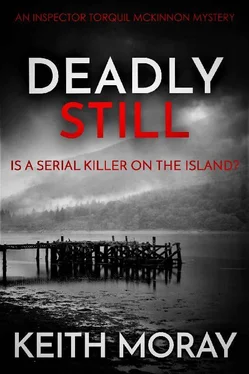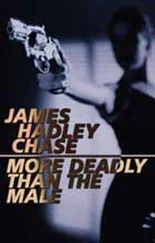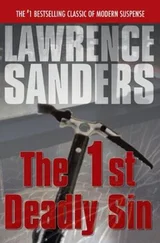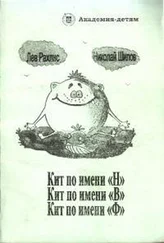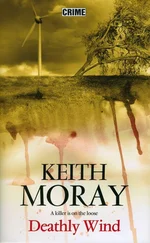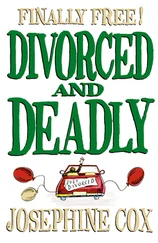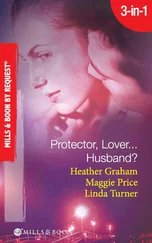‘My father had built the place up and acquired other crofts so that we had a sizable farmstead. But when he died and I took it over I had plans, big plans, to diversify with a small distillery. It was not an easy matter, mind you. So many hoops to leap through, not to mention a very considerable investment. Over the years I have ploughed about two million pounds into this place, but its proving worth it these last few years.’
‘When did you start, Mr McNab?’
‘Eight years ago now. We’re starting to build a reputation and the orders are coming in from all over the world for the Abhainn Dhonn peated single malt whisky.’ He glanced at his watch again. ‘But I’ll need to go, so Keith will show you through the various processes now and answer any questions you have.’
‘Oh, there is just one question before you go,’ said Penny. ‘What experience of whisky distilling did you have?’
For the first time the ghost of a smile crossed his lips. ‘I maybe shouldn’t admit it, but the family had always operated a wee still, just for the family’s consumption. That was my forebears, mind you. No illicit whisky has ever been produced on this land as long as I have been in charge.’
Once he had gone Keith led Penny to the next long room in the centre of which stood a large round tub surmounted by a metal dome with various pipes attached. Beyond that, was another large vessel connected to the first by a large pipe.
‘The first thing you need to know, DC Faversham, is that whisky is essentially just distilled malted barley beer. The malting of the barley is done in the old barn. You see, barley is just starch, so we have to make it turn into sugar that we can ferment. We lay it all out and turn it and turn it, and then moisten it and heat it to really trick it into thinking it is spring. It then turns its starch into sugar.’
He pointed to the large tub. ‘This is the very first process, which we call mashing and this is the mash tun. We put the ground grain into the tun and mix it with hot water, which turns this into a sort of cereal tea, that we call the “wort”. See that big pipe? It’s called an underback. The wort goes through that into the collecting vessel, that is called the washback. Its gently heated and yeast is added to make it ferment.’
Penny had started to make notes. ‘Fascinating. And how long does that take?’
‘It is there for precisely seventy-two hours. That is our time at Abhainn Dhonn, but other distilleries might be as quick as forty-eight or as long as one hundred and twenty. This is now beer and it can go on to be distilled. And that takes place next door.’
As they walked past the mash tun and the collecting vessel, Penny asked: ‘How long have you worked here, Keith? I understand from my inspector that you used to work at the big distillery.’
At the door Keith turned with a knitted brow. ‘I’ve been with Hamish McNab for seven years. It’s a sore point with the Corlin-Macleods, because I was their head distiller. I don’t think they ever forgave me.’ His natural smile bounced back. ‘Put it this way, they scored me off their Christmas card list and I barely get a nod from either of them when I’m out and about.’
‘So Mr McNab wanted your expertise?’
Keith nodded. ‘Aye, he did. And they were understandably concerned that I might be giving away their secrets.’
Penny nodded. ‘Understandably.’
‘But the truth is that the Glen Corlin range of whiskies are well established and the water they use has an entirely different character. They make both peated and unpeated whisky, whereas we concentrate on peated. At least for now. Later, who knows.’
‘Were the Corlin-Macleods difficult to work for?’
This brought a hearty laugh. ‘Goodness me, no. The truth is that they were easier than Hamish McNab. He has a short temper and to speak frankly, he’s a bit of a potty-mouth. But he’s good to us, all four of us. He also hired Jerry McColl who worked for them. Between Hamish and the four we work the farm, do the malting, distilling, warehousing and supplying. That’s why I wanted to come here when Hamish offered me the chance, apart from the money, it is more of a challenge than the almost automatic whisky production at a larger distillery like Glen Corlin.’
He opened the door and led the way through to the still room in which were two huge copper stills, shaped like giant retorts, with copper tubes coming out of them and going into large cylinders. Another man of the same age and dressed in the same way was checking gauges and peering through a porthole window in one of the stills. The nearest one was larger than the other.
‘This is Jerry and he’s keeping a close watch on the process right now.’
He pointed to the larger of the two stills. ‘You see we distil twice, that’s why there are two stills. The first is called the wash still. The washback that we talked about next door goes into this and it’s heated by piped steam from a remote boiler, that goes through a pan in the bottom of the still. A still, you see, is just like a big kettle. The spout, that pipe that comes out and then angles downwards, is called the lyne arm. It then goes into the big condenser and then into the collecting receptacles. This takes about four hours and the resultant liquid is called low wine. It is about 25 per cent alcohol.’
Penny started making a diagram and jotting notes around it.
‘If this was a wee home still instead of a condenser it would go into what they call a worm. The tube would be curled round and round, so that it would cool down the spirit.’
‘Thank you, that’s useful to know.’
‘The second smaller still is called the spirit still. The low wine goes in here and is turned into whisky, with a strength of about 60 per cent. This is done slowly and carefully and takes about eight hours.’
‘This is the bit I’m most interested in,’ said Penny. ‘Mt chemistry is a bit rusty, but I understand that there are different alcohols and my inspector said to ask you about something called the foreshot.’
Keith absently reached up and smoothed down his thinning hair. ‘Aye, that is important. Basically, methanol evaporates at 65 degrees centigrade, so it comes off first. Ethanol, the good stuff that we want, comes off at 78 degrees. Then, when you’ve distilled out most of the alcohol towards the end of the run, you get the congeners and aromatics that add to the taste and give your whisky its uniqueness. The trouble is, too many of them and you’ll spoil it. For this reason we have cuts where we switch from the three parts. That is the skill of the stillman, like Jerry there, knowing when to make the cuts. The foreshot is a relatively quick one, but that’s got the methanol and the methyl aldehyde, the bad stuff. The middle cut we call the heart and the last cut is the feint.’
‘So the foreshot is the dangerous stuff? Its full of methanol?’
‘That’s right, but we take measures to separate them. See the pipes going from the condenser into those closed tanks? The foreshot is collected in the spirit safe. See those windows with hydrometers inside the chambers? They measure the density of the liquid and we can compare colour charts and work out the constituents. By law it has to be locked so that no one can taste the methanol. Then the flow is altered and the heart, the good stuff, collects in the spirit receivers and then the last part, the feint, collects in the spirit safe.’
‘What about someone with a makeshift still, how would they go about making the cuts?’
Keith laughed. ‘By luck. Some believe that you can use the spoon test. To do that you would pour some into a spoon and set it on fire. The theory was that a safe spirit burns with a blue flame, but a tainted one with methanol would burn with a yellow flame. I’ve also heard that if folk use an old car radiator as a condenser then the lead in the spirit would burn with a red flame. Apparently they used to say red makes you dead.’
Читать дальше
